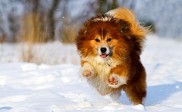How to Achieve Delectable Food Photography
Food Photography proves to be an exciting form of photography. Food is usually seen as a simple part of our daily routine. As a creative individual, creating a composition that is unique is one of our many goals, but taking something ordinary and making it extraordinary is something both Photographers and Chefs have in common. If you’re interested in creating photographs where berries glisten with sweetness or the mouth waters at the sight of hearty bacon and melting cheese, then the following tips will surely help you in your compositions.
Here are 7 Tips for Delectable Food Photography:
Background: Highly recommended for food photography is shooting the food with a very clean background so the food will “stick out.” Since your focus will be solely on the particular food, you don’t want your viewer to be distracted by other things in the photo. A white background is preferable but not required. Just keep it simple so all the details of the food are brought to attention.
Natural Lighting: Although it’s not always possible, if you can take your shot in natural lighting, it can look the best. Most restaurants, however, are very dimly lit so if you can, try to shot during the daytime and take the food to a nearby window. Using your flash is an option but it is suggested that you use either a diffuser or make the flash bounce off a wall or ceiling. This is because the flash when used directly can produce harsh shadows.
White Balance: Be sure to adjust your white balance in accordance to the type or color of the food you’re shooting. For example, meat generally looks better when shot with a warm tone. You may find it beneficial to experiment with different settings.
Close Up: Along with all of the tips above, close ups are essential in food photography. To be able to capture a delicate food subject up close and personal will make detail give value to your photos and the results will be unforgettable. Don’t only take a photo of the whole plate or bowl, but get close so you can see each curve that is unique and intriguing.
Presentation: Something that a Chef would pay close attention to is presentation. Of course, depending on what type of food you’re shooting, the restaurant and the purpose of the shoot, you will choose how to present the food. If you’re going for something that’s more than just “plopped” food, try experimenting with how you can present or set up the food. If you’re shooting pancakes, for instance, maybe get a stack of 10, add some fruit topping or whipped cream and a glass of orange juice. Adding a fork or a spoon to your subject or even a piece of greenery may help perk up your photo. Specifically, if you have a piece of cake, pastry or even meat, cutting it to display the inside can add to your composition. Get creative and see what you can come up with, but remember to keep it as simple as possible.
Smaller Portions: Instead of focusing on a full course meal, cutting a small piece of your food subject and making only that small piece the center of your focus can result in a really great photograph. This especially works for desserts, candies, or even something like lasagna.
Angles: Next thing to try, which should be a habit for all the photos you take, is varying your perspectives. Move around, get shots from eye level, above, below, from the sides and so forth. You definitely don’t have to stay in one spot.
You may want to take a look at the following related posts:










Photos good enough to eat!!!! nom nom ! great share
This was exactly the kind of page I needed!¡ Tomorrow I do food photography
Thanks!!
Yummy! Thanks for the tips too!
thanks y’all! 🙂 Everyone who left a comment and shared really has made me smile!
trying my hand at food photography.
I have gotten some ideas for doing some food photos!
Food photography is really fun!. This tutorial really helps me a lot. Thanks for sharing.
Great Tips! I am new in this food photography thing,I wish to see more tips like these.
Cool post. I Think food photography is all about practise
I love food photography and i always take photos of the food I eat.
Great tips. It was helpful because I needed to work on how to use lighting better in food photography
Awesome food photography tips thank you!
Hi — Thank you all for stopping by and leaving comments! I’m very glad you enjoyed this article! 🙂